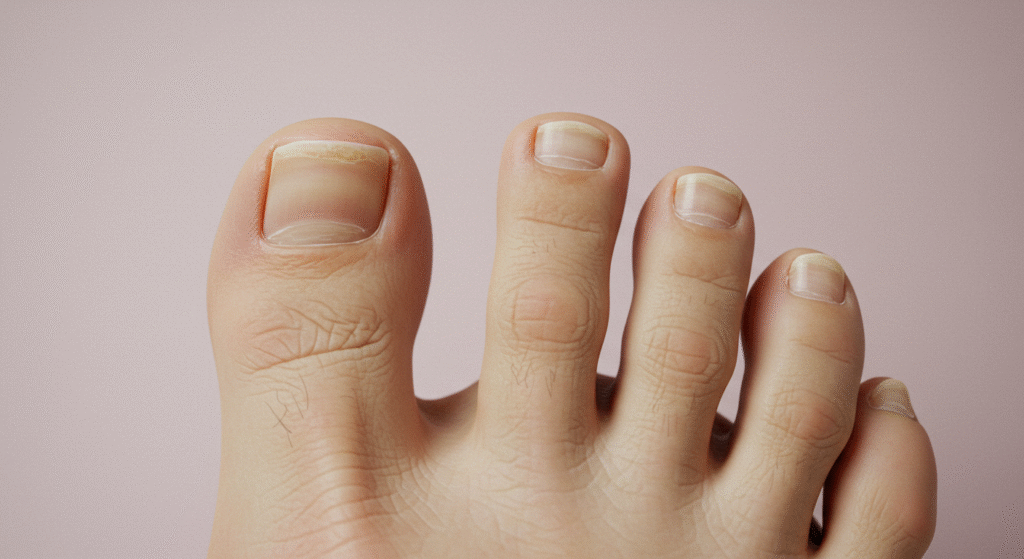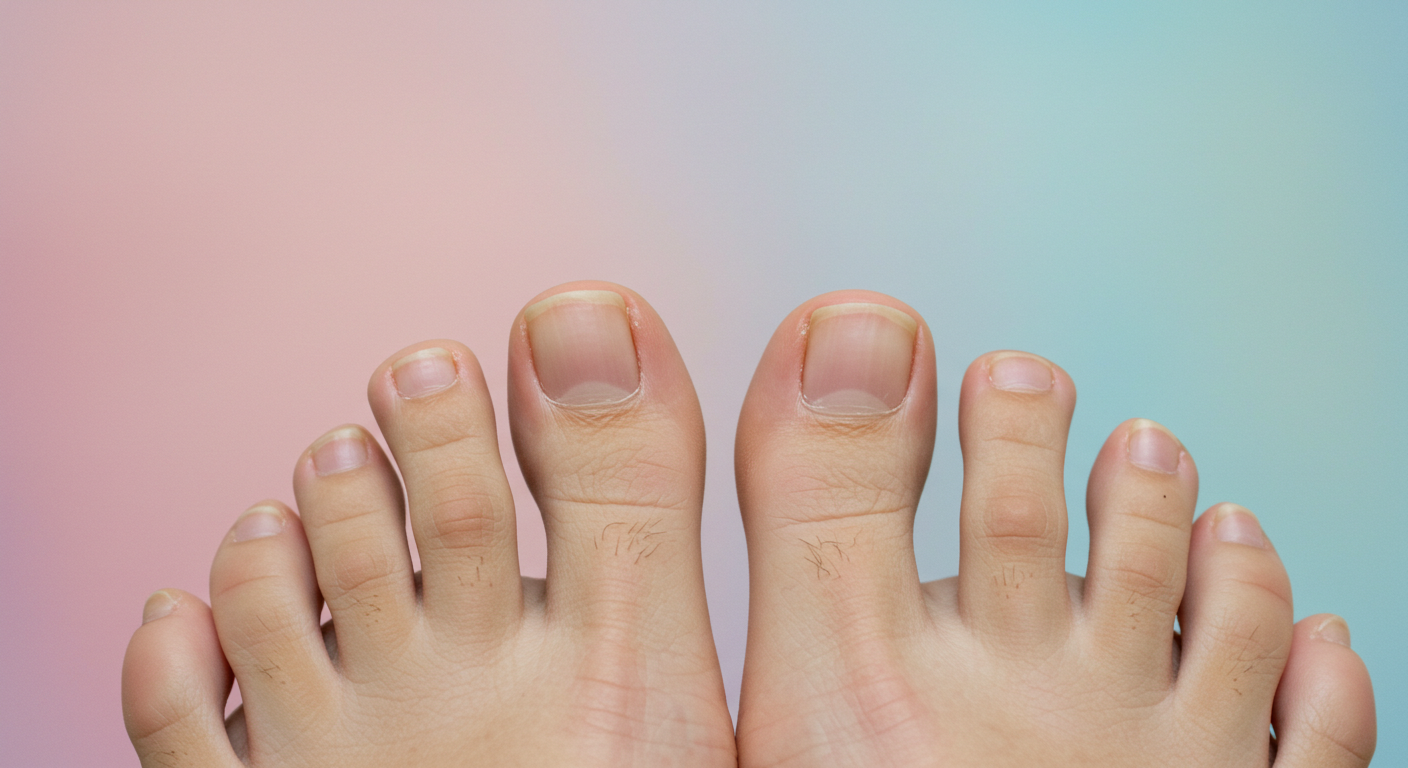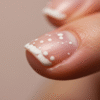For these 5 reasons, it is important for everyone to keep trimming their toenails:
The risk of many infections increases during monsoon. If you have a habit of keeping long toenails, then this can be a risk factor for you.
Just like it is important to take care of all parts of the body, it is equally important to take good care of toenails. Nails provide support and protection to the delicate tips of our fingers. Therefore, it is important to keep them clean, trim them on time and give them proper nutrition. Otherwise, many types of problems can happen to you. Here we are talking about the problems that long toenails can give you.
To know about the health problems caused by ingrown nails, we spoke to Shimla’s senior dermatologist Dr. Sandeep Thakur.
Here are 5 problems caused by ingrown nails

Experts suggest that overgrown nails can lead to issues such as injury, infection, and skin conditions.
1. Problems with blood circulation in the toes
When nails start growing too much, they also start becoming thick. This condition mostly affects the toenails. The elderly are more at risk. Due to this, problems like fungal infection in the feet, injury, problem in blood circulation in the toes, arthritis in the toes can occur. This problem can also increase if you wear poorly fitting shoes.
2 Risk of bacterial infection
When the nails grow, Staphylococcus aureus bacteria start growing in the nails, due to which there is a risk of bacterial infection. Infections typically begin at the base of the nail i.e. the skin attached to the base.
If the feet are constantly wet, the tissues of the fingers also start getting affected. If not treated on time, it can lead to swelling and pus around the nails and in the fingers. If the problem persists for a long time, it increases the risk of candida infection. There is also a fear of eczema in the area around the nails.
3. Fungal Infection
When toenails start growing, they start growing in a crooked shape. Sometimes the nails start penetrating the skin. This condition is called ingrown toenails. This can also be cured at home. If this problem persists, then problems like redness in the skin, poor blood circulation, etc. start occurring. If the nails are not cut properly for a long time, there is also a fear of fungal infection.
4. Too long nails can cause injury
If your toenails have grown too long, there is a possibility of them getting stuck in clothes. They can get stuck in clothes and break and can also cause injury to other body parts.
5. Stress increases
If nails are not cut, then in case of trouble we start biting the nails of our fingers. At the same time, we start scratching the ground with the toes. Due to this, there is a fear of injury to the toes.
On the other hand, when the finger and toe nails are too long, the body does not feel energetic. It also affects your focus negatively.
Diabetic patients should pay special attention
If you have diabetes or a weak immune system, the first thing you need to do is take care of your feet and nails. Due to poor blood circulation in the feet of a diabetic patient, there is numbness. “This heightens the risk of injuries and fungal infections. Thus, taking proper care of your feet and nails is crucial. This heightens the risk of injuries and fungal infections. Thus, taking proper care of your feet and nails is crucial.
FAQs for Health Problems Caused by Long Toenails
1. Why is it important to trim toenails regularly?
Trimming toenails regularly is essential to prevent infections, injuries, and discomfort.
Long nails collect dirt, bacteria, and fungi, which can lead to serious health issues like fungal infections, bacterial infections, and ingrown nails.
Benefits of trimming toenails regularly:
- Reduces risk of bacterial and fungal infections
- Prevents nails from growing inward and causing pain
- Improves foot hygiene and appearance
- Minimizes chances of nails breaking or causing injury
- Promotes better blood circulation in toes
Tip: Trim toenails straight across and avoid cutting them too short to prevent ingrown toenails.
2. How can long toenails affect blood circulation in the feet?
Overgrown and thick toenails can put pressure on surrounding skin and tissues, leading to poor blood circulation.
This issue is common in elderly individuals, diabetic patients, and those who wear tight or poorly fitting shoes.
Symptoms of poor blood circulation caused by long toenails:
- Tingling or numbness in toes
- Coldness in feet
- Swelling or redness
- Slow-healing wounds or infections
Ignoring this condition can lead to serious complications, including foot ulcers or arthritis.
3. Can long toenails cause bacterial infections?
Yes, long toenails create a breeding ground for bacteria, especially Staphylococcus aureus, which is responsible for many nail infections.
This bacteria usually grows under the nail and near the base where the nail meets the skin.
Risk factors for bacterial toenail infections:
- Walking barefoot in public areas like pools or bathrooms
- Constantly wet or sweaty feet
- Sharing nail clippers or footwear
- Poor foot hygiene during the rainy season
Symptoms of bacterial infection:
- Swelling and redness around toenails
- Pus formation near the nail base
- Pain or throbbing sensation in toes
- Warmth around the affected area
Important: If untreated, bacterial infections may lead to eczema, candida infections, or even severe complications.
4. What is an ingrown toenail and how does it develop?
An ingrown toenail occurs when the edge of the toenail grows into the surrounding skin, causing pain, redness, and swelling.
This often happens when toenails are cut incorrectly, or if they are left too long and start to curve inward.
Common causes of ingrown toenails:
- Cutting toenails too short or in a curved shape
- Wearing tight or closed shoes for extended periods
- Toe injuries or repetitive stress
- Naturally curved toenails
- Excessive moisture during monsoon season
Symptoms of an ingrown toenail:
- Tenderness and pain around the nail
- Swelling and redness
- Pus or fluid discharge (in severe cases)
Quick Tip: Soak feet in warm water, keep nails dry, and wear comfortable footwear to reduce discomfort.
5. Can fungal infections be caused by long toenails?
Yes, fungal infections are very common in long toenails, especially during the rainy season when feet are often damp.
When toenails are not cut regularly, dirt and moisture get trapped, creating the perfect environment for fungal growth.
Symptoms of fungal toenail infections:
- Yellow, white, or green nail discoloration
- Thick, brittle, or crumbly nails
- Foul odor from the infected nail
- Pain while walking or wearing shoes
- Nail separating from the nail bed (severe cases)
Prevention Tip:
- Keep nails clean and dry
- Avoid wearing wet socks or shoes
- Use antifungal powders or sprays during monsoon
6. How can long toenails cause injuries?
Overgrown toenails can get caught in clothes, shoes, or bed sheets, leading to accidental tears or breaks.
These injuries are painful and can lead to infections, especially if bacteria enter through the broken nail or wound.
Examples of injuries caused by long toenails:
- Toenail breaking or splitting
- Cuts or scratches on nearby skin
- Nail partially detaching from the nail bed
- Infection due to open wounds
Keeping toenails short and smooth greatly reduces the risk of such injuries.
7. How do long toenails affect mental and emotional well-being?
Surprisingly, long and poorly maintained toenails can increase stress and anxiety.
People with discomfort caused by overgrown nails may bite their fingernails, scratch surfaces with toes, or feel restless.
Additional effects include:
- Decreased energy levels due to discomfort
- Difficulty focusing on daily tasks
- Embarrassment or low self-esteem due to unkempt nails
Maintaining clean and trimmed nails promotes mental wellness along with physical health.
8. Why should diabetic patients be extra careful with toenail care?
Diabetic patients are at a higher risk of foot infections and injuries due to poor blood circulation and nerve damage (neuropathy).
Even a minor toenail issue can lead to serious complications, including ulcers and gangrene.
Toenail care tips for diabetic patients:
- Inspect feet daily for cuts, redness, or swelling
- Trim toenails straight across to prevent ingrown nails
- Avoid walking barefoot, especially outdoors
- Keep feet dry and moisturized
- Visit a podiatrist for regular check-ups
Care: Never attempt to cut thickened or ingrown toenails yourself if you have diabetes—consult a doctor instead.
9. How often should toenails be trimmed?
Most people should trim their toenails every 2–4 weeks, depending on how quickly their nails grow.
However, during monsoon season, trimming may be required more frequently to prevent infections caused by moisture.
Tips for safe toenail trimming:
- Cut toenails straight across to prevent ingrown nails
- Avoid cutting nails too short
- Disinfect nail clippers before and after use
- Moisturize feet after trimming to prevent dryness
10. What are the best foot hygiene practices during monsoon season?
The monsoon season increases the risk of toenail infections due to excess moisture and waterlogging.
Following good foot hygiene practices can help keep toenails healthy.
Monsoon foot care tips:
- Wash and dry feet thoroughly after coming indoors
- Wear breathable footwear like sandals instead of closed shoes
- Change socks daily to keep them clean and dry
- Apply antifungal powder to feet and shoes
- Disinfect shoes weekly using sunlight or antifungal sprays
- Avoid walking barefoot on wet or dirty surfaces
READ ALSO: White Spots on Your Nails? Here’s What You Need to Know
Was this helpful?
Your feedback helps us create better content
Thank you for your feedback!
Your input helps us improve our content.




